Unraveling the Heritage of the Mausoleum of Emperor Yan: A Must-Visit for History Buffs
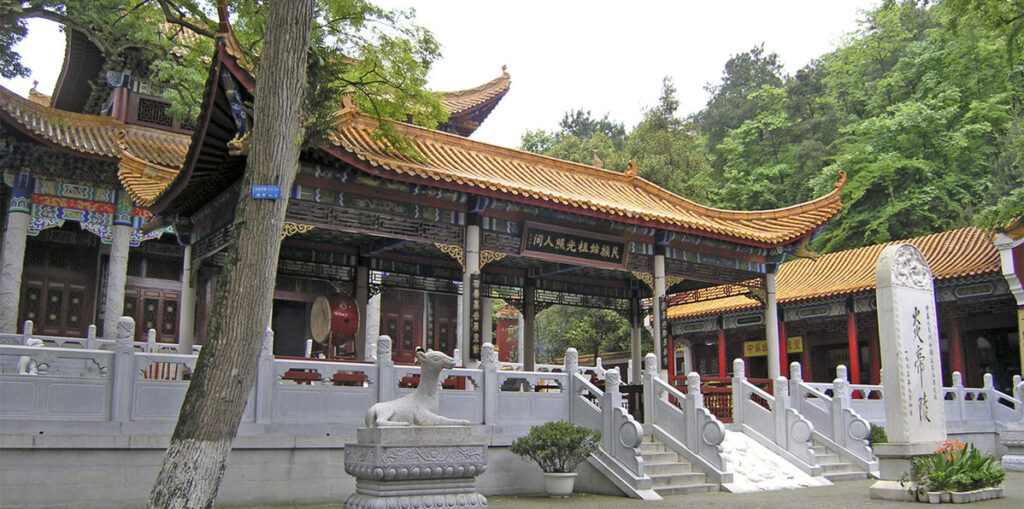
An Essential Guide to Visiting Mausoleum Of Emperor Yan
In This Guide
- An Essential Guide to Visiting Mausoleum Of Emperor Yan
- The Rich History and Legends of Mausoleum Of Emperor Yan
- Main Highlights: What You Absolutely Can’t Miss
- Planning Your Visit: A Practical Guide
- Tickets: Prices, Booking, and Tips
- How to Get There: A Complete Transportation Guide
- Local Cuisine and Accommodation Nearby
- Frequently Asked Questions
- Final Thoughts on Your Trip
Visiting the Mausoleum of Emperor Yan is more than just a journey to a historical site; it is an expedition into the very roots of Chinese civilization. Nestled amidst the serene landscapes of Huangling County, in the Shaanxi Province, this monumental site pays homage to the Yellow Emperor, a legendary figure revered as the ancestor of the Chinese people. With a history that stretches back over 5,000 years, the mausoleum stands as a testament to the enduring legacy of the Yellow Emperor, who is celebrated not only for his legendary contributions to Chinese culture and governance but also for unifying the early tribes of the nation.
As you approach the mausoleum, you will encounter an architectural marvel that marries simplicity and elegance, harmoniously blending with the surrounding environment. The site is not merely a burial ground; it is a cradle of ancient traditions and rituals, where the past whispers through the ancient cypress trees that guard the tomb. Among these giants, one tree is said to be over 5,000 years old, believed to have been planted by the Yellow Emperor himself.
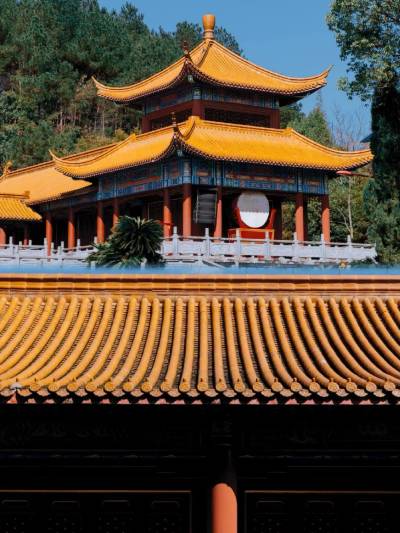
Mausoleum Of Emperor Yan.
During your visit, you will be enchanted by the annual Xuanyuan Huangdi Ceremony, where descendants and visitors alike gather to pay respects, an event steeped in history that has been observed since 422 BC. The mausoleum complex is replete with cultural relics, including the grand Hanwu Xiantai platform and the sacred Xuanyuan Temple, each narrating stories of valor and reverence that have shaped the identity of the Chinese people.
Prepare to embark on a journey that transcends time, where every step within the mausoleum grounds leads you deeper into the narratives that define a nation. Whether you are a history enthusiast or a cultural explorer, the Mausoleum of Emperor Yan offers a profound connection to the heart of Chinese heritage. Let the echoes of the past guide you as you explore this sacred site, where history, myth, and nature converge in a breathtaking tableau.
The Rich History and Legends of Mausoleum Of Emperor Yan
Nestled amidst the serene landscapes of Huangling County in Shaanxi Province, the Mausoleum of Emperor Yan (炎帝陵), also known as the Mausoleum of the Yellow Emperor, is a site steeped in rich history and legendary narratives. As the resting place of one of the most revered figures in Chinese mythology, this mausoleum not only symbolizes the dawn of Chinese civilization but also serves as a testament to the enduring legacy of the Yellow Emperor, Xuanyuan.
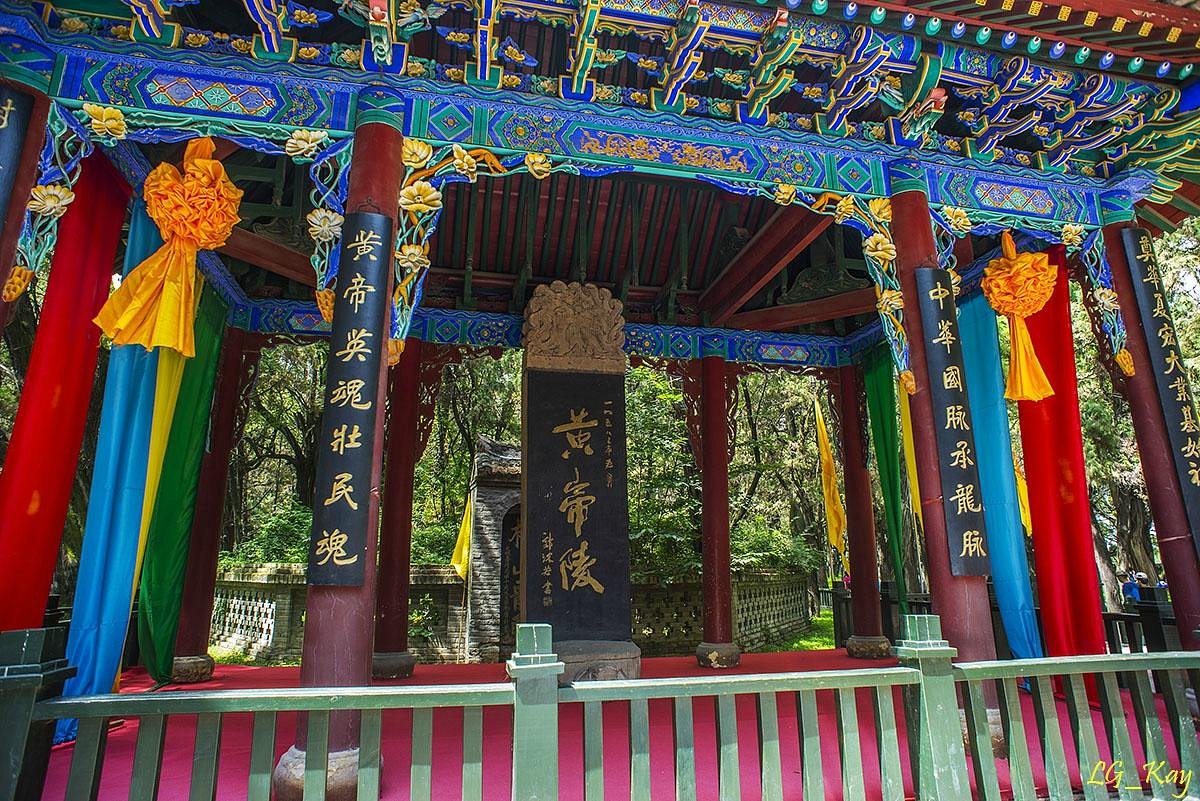
Mausoleum Of Emperor Yan.
The Legacy of the Yellow Emperor
The Yellow Emperor, known as Xuanyuan, is often regarded as the legendary ancestor of the Chinese people. His birth, said to have occurred over 5,000 years ago at the Subduing Dragon Gorge, is celebrated annually on the second day of the second lunar month—a day believed to be auspicious as it symbolizes the dragon lifting its head. This event is rooted in ancient Chinese cosmology, where dragons are revered as symbols of power and auspiciousness.
Xuanyuan’s reign is characterized by his unification of various tribes during a tumultuous era, establishing the first centralized state in Chinese history. Legends narrate his victories over rival tribes, such as the Yandi and Chiyou, solidifying his status as a cultural hero and the first emperor of the Chinese nation. His virtues of wisdom and strength made him a legendary figure whose influence extends beyond mere governance; he is often credited with numerous innovations, including advancements in medicine, agriculture, and governance.

Mausoleum Of Emperor Yan.
Historical Significance of the Mausoleum
The Mausoleum of Emperor Yan is not merely a burial site; it encompasses a vast cultural landscape that has been revered throughout Chinese history. Covering an area of approximately 2,286.70 square kilometers, it is often referred to as the “First Mausoleum of China.” The site is adorned with various historical and cultural relics, such as the Hanwu Xiantai and the sacrificial pavilions, which reflect the architectural elegance and simplicity characteristic of ancient Chinese design.
The mausoleum stands as a focal point for annual ceremonies that honor the Yellow Emperor. The most notable is the Xuanyuan Huangdi Ceremony, held during the Qingming Festival, which has its roots tracing back to 422 BC. This ritual, recognized as an intangible cultural heritage, brings together thousands of worshippers seeking to pay homage to the Yellow Emperor, reinforcing the profound connection between the past and the present.
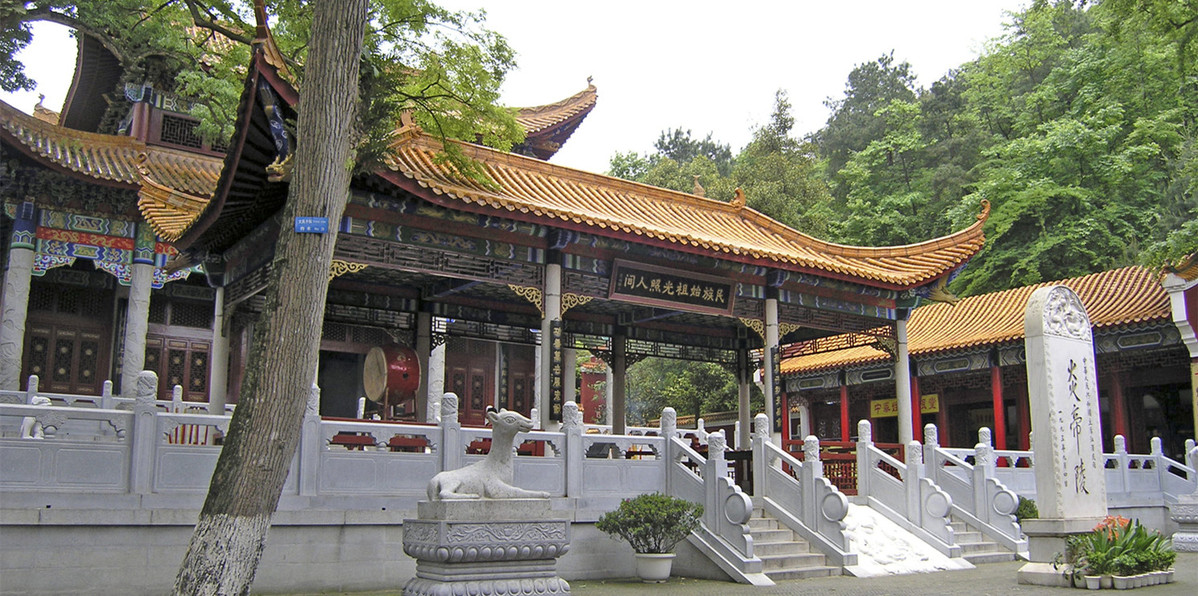
Mausoleum Of Emperor Yan.
Architectural Marvels and Natural Wonders
Visitors to the mausoleum will be captivated by its unique architectural style that harmonizes with the surrounding landscapes. The site features the Xuanyuan Temple, a significant location for worship that dates back to the Han Dynasty. Its courtyard, lined with ancient cypress trees—some said to have been planted by the Yellow Emperor himself—adds to the spiritual ambiance of the site. Among these, a notable cypress tree is over 5,000 years old, embodying the enduring connection between nature and legend.
The mausoleum’s sacred area includes the impressive burial mound of the Yellow Emperor, surrounded by a tranquil ancient cypress forest, reputed as the oldest and best-preserved in China, with over 80,000 trees. This grove is not only a natural treasure but also a living testament to the reverence held for the Yellow Emperor and his legacy.
Conclusion
The Mausoleum of Emperor Yan is more than a historical site; it is a pilgrimage destination for those seeking to connect with the ancestral roots of Chinese civilization. It offers a glimpse into the rich tapestry of Chinese mythology, history, and culture, inviting international travelers to explore the legends that shaped a nation. As you stand before the grand structures and ancient trees, you will feel the weight of history and the whispers of legends that continue to resonate through the ages.
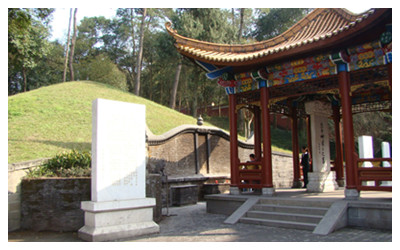
Mausoleum Of Emperor Yan.
Main Highlights: What You Absolutely Can’t Miss
Must-See Highlights at the Mausoleum of Emperor Yan (炎帝陵)
Visiting the Mausoleum of Emperor Yan, also known as the Yellow Emperor Mausoleum, is an extraordinary opportunity to connect with one of the most significant figures in Chinese history. Nestled on Qiaoshan Hill in the Huangling County of Shaanxi Province, this majestic site offers a blend of historical, cultural, and natural wonders. Here are the main highlights you absolutely cannot miss:
1. Xuanyuan Temple
A cornerstone of the mausoleum complex, Xuanyuan Temple dates back to the Han Dynasty and serves as the primary site for worshiping the Yellow Emperor. Key features include:
– Temple Gate: An impressive entrance that sets the tone for the sacred ambiance.
– Hall of the Human Ancestor: Built during the Ming Dynasty, this hall is dedicated to the Emperor and showcases intricate architecture.
– Stele Corridor: Home to over 50 ancient stone tablets, this corridor narrates historical events and honors the Emperor’s legacy.
– Ancient Cypress Trees: The courtyard boasts ancient cypress trees, some reputedly planted by the Yellow Emperor himself, standing over 5,000 years old.
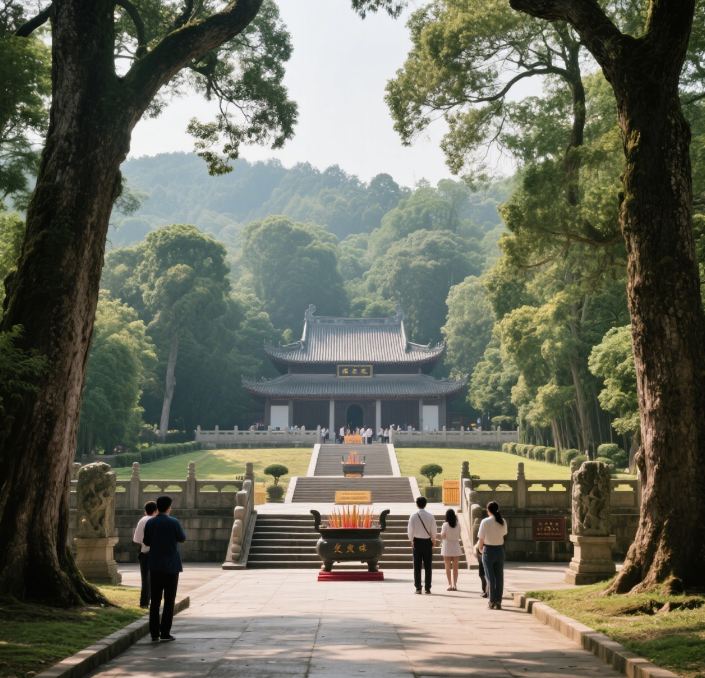
Mausoleum Of Emperor Yan.
2. The Mausoleum Area
The mausoleum area, located in the northern section of the complex, is where visitors can explore significant landmarks:
– Ascension Road: A scenic mountain path leading to the tomb, where you’ll find the Dismounting Stone, marking the spot for worshippers to dismount in reverence.
– Yellow Emperor’s Burial Mound: This sacred site is surrounded by an enchanting ancient cypress forest, providing a serene atmosphere for reflection.
– Hanwu Xiantai: A large earth platform constructed during the Han Dynasty, this platform offers breathtaking panoramic views of the surrounding landscape.
3. Ancient Cypress Forest
The Ancient Cypress Forest at the mausoleum is an awe-inspiring sanctuary, reputed to be the oldest and best-preserved cypress grove in China. Highlights include:
– Over 80,000 Cypress Trees: Among them, more than 30,000 trees have stood for over a millennium, showcasing nature’s resilience.
– Historical Significance: Legend has it that one of the trees was planted by the Yellow Emperor himself, symbolizing the deep-rooted cultural heritage of this site.

Mausoleum Of Emperor Yan.
4. Annual Ceremony of Worshiping the Yellow Emperor
If your visit coincides with the Qingming Festival, don’t miss the Xuanyuan Huangdi Ceremony, an annual event deeply rooted in tradition. This ceremony has been celebrated since 422 BC and is recognized as an intangible cultural heritage. Witnessing this ritual offers a unique insight into the reverence that continues to surround the Yellow Emperor today.
5. Architectural Marvels
The mausoleum’s architectural style is a highlight in itself. Characterized by simplicity and elegance, the structures harmonize with the natural landscape, embodying the majestic etiquette of ancient emperors. The design reflects a blend of traditional Chinese architectural elements and the grandeur reminiscent of monumental structures around the world.
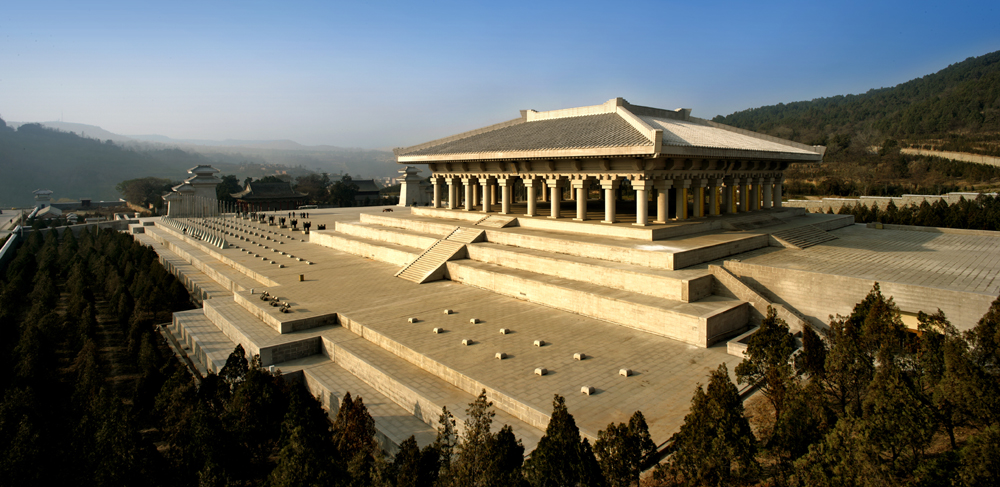
Mausoleum Of Emperor Yan.
Conclusion
A visit to the Mausoleum of Emperor Yan is more than just a historical excursion; it’s a journey through the roots of Chinese civilization. With its profound cultural significance, stunning natural beauty, and architectural splendor, this site promises an enriching experience for any traveler eager to understand the ancient heritage of China. Make sure to allocate ample time to explore and absorb the tranquility and majesty of this sacred space.
Planning Your Visit: A Practical Guide
Essential Information for Your Visit to the Mausoleum of Emperor Yan (炎帝陵)
The Mausoleum of Emperor Yan, also known as the Huangdi Mausoleum, is a significant cultural and historical site that offers a profound insight into the origins of Chinese civilization. Nestled in the picturesque Qiaoshan Hill in Huangling County, Shaanxi Province, this mausoleum is a must-visit destination for anyone interested in Chinese history and culture. Below is a comprehensive guide to help you plan your visit effectively.
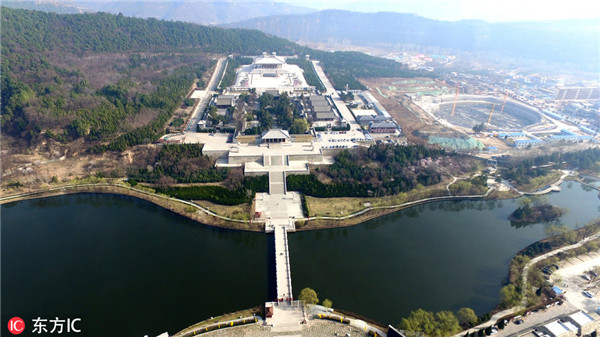
Mausoleum Of Emperor Yan.
Getting There
- Location: The mausoleum is located approximately 90 kilometers south of Xi’an, making it easily accessible for day trips.
- Transportation Options:
- By Train: Take a train from Xi’an to Yan’an, then a local bus or taxi to reach the mausoleum.
- By Car: Renting a car or hiring a driver is a convenient option, allowing you to explore the beautiful rural landscapes along the way.
- Guided Tours: Many travel agencies offer guided tours that include transportation, local guides, and other attractions in the area.
Admission Fees and Hours
- Entry Fee: The cost of admission is approximately 90 RMB (about $14 USD), which grants you access to the mausoleum complex.
- Opening Hours: The mausoleum is generally open from 8:00 AM to 6:00 PM. However, it’s advisable to check in advance, particularly during holidays or special events.
What to See
- Xuanyuan Temple:
- This temple is a central part of the mausoleum complex and is dedicated to the worship of the Yellow Emperor.
-
Key features include the Hall of the Human Ancestor and the ancient stele corridor.
-
The Burial Mound:
-
Ascend the “Ascension Road” to reach the burial mound, surrounded by ancient cypress trees, some believed to be planted by the Yellow Emperor himself.
-
Hanwu Xiantai:
-
A large earth platform constructed during the Han Dynasty, offering panoramic views of the surrounding landscape.
-
Cypress Forest:
- Home to over 80,000 ancient cypress trees, this grove is the oldest and best-preserved in China. Look for the 5,000-year-old tree said to have been planted by the Yellow Emperor.
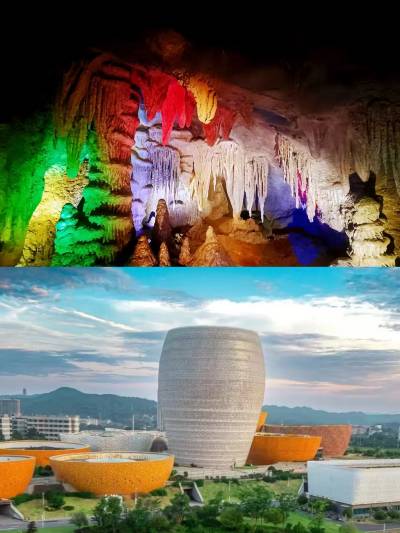
Mausoleum Of Emperor Yan.
Cultural Significance
- Annual Ceremonies: If possible, plan your visit during the Qingming Festival when the annual Xuanyuan Huangdi Ceremony takes place. This ceremony is a deep-rooted tradition honoring the Yellow Emperor, showcasing performances and rituals steeped in history.
Tips for Visitors
- Best Time to Visit: Spring (April to June) and autumn (September to November) are ideal for visiting, as the weather is mild and the natural scenery is at its best.
- Wear Comfortable Shoes: The mausoleum complex involves some walking and ascending, so comfortable footwear is essential.
- Respect Local Customs: As a site of cultural significance, maintain decorum while visiting, especially during ceremonies or in sacred areas.
- Photography: While photography is generally allowed, be respectful of areas designated for worship.
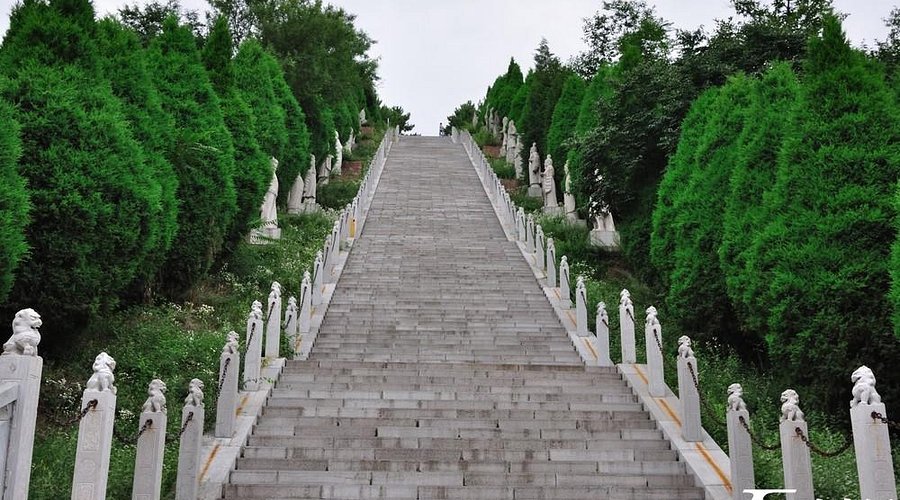
Mausoleum Of Emperor Yan.
Nearby Attractions
Consider extending your trip to explore other historical sites in Shaanxi Province:
– Yan’an: Known for its revolutionary history and stunning landscapes.
– Hukou Waterfall: A beautiful natural sight on the Yellow River, just a short drive away.
– Ancient City of Xi’an: Famous for the Terracotta Warriors and the city wall, adding more depth to your cultural experience.
Final Thoughts
A visit to the Mausoleum of Emperor Yan offers not just a glimpse into ancient Chinese history but also an opportunity to connect with the cultural roots of the Chinese nation. Whether you are a history enthusiast or a curious traveler, this mausoleum promises an enriching experience that will leave a lasting impression. Start planning your journey today, and immerse yourself in the legacy of the Yellow Emperor!
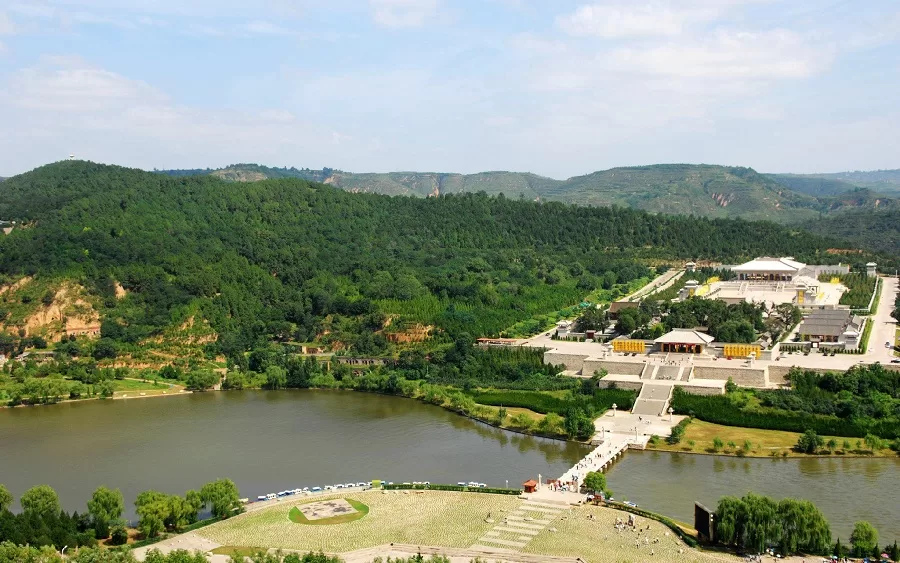
Mausoleum Of Emperor Yan.
Tickets: Prices, Booking, and Tips
When planning your visit to the Mausoleum of Emperor Yan, also known as the Huangdi Mausoleum, it’s important to be well-informed about ticket prices, booking procedures, and some handy tips that will enhance your experience. This sacred site, steeped in the rich tapestry of Chinese history, attracts visitors from around the world eager to connect with their ancient roots.
Ticket Prices
- General Admission: The entrance fee is typically 90 RMB (approximately $14 USD). This fee grants you access to the mausoleum complex, including various historical sites, temples, and the beautiful ancient cypress forest.
- Discounted Rates: Students, seniors, and groups may be eligible for discounted tickets. Always carry valid identification to avail of these offers.
- Free Admission Days: Check for any designated free admission days, often during cultural festivals or national holidays, where entry may be waived.
Booking Information
- On-site Purchase: Tickets can be easily purchased at the entrance. However, during peak tourist seasons, it is advisable to arrive early to avoid long queues.
- Online Booking: Some travel agencies and ticketing platforms offer online bookings, allowing you to secure your tickets in advance. This can be particularly beneficial if you are visiting during busy periods.
- Guided Tours: Consider booking a guided tour that includes the mausoleum. These tours often provide in-depth historical context and can enhance your understanding of the site. Prices for guided tours vary but generally start around 300 RMB (about $46 USD) per person.
Tips for Visitors
- Best Time to Visit: The ideal time to visit is during the spring and autumn months (April to June and September to November) when the weather is mild, and the surrounding landscapes are particularly beautiful.
- Dress Appropriately: As this is a historical and sacred site, dress modestly and comfortably. Wear sturdy shoes as some areas may require walking along uneven paths.
- Respect Cultural Practices: If you visit during the annual Xuanyuan Huangdi Ceremony, which occurs during the Qingming Festival, be prepared for a large gathering and follow local customs with respect.
- Explore Nearby Attractions: The mausoleum is located near other significant historical sites, such as the Hanwu Xiantai and the Lingxing Gate, so plan your itinerary to make the most of your trip.
- Photography: While photography is permitted, be mindful of areas where it may be restricted, especially during ceremonies or in areas of worship.
By keeping these details in mind, your visit to the Mausoleum of Emperor Yan will not only be seamless but also enriching, allowing you to fully immerse yourself in the profound history and culture of this iconic landmark.
How to Get There: A Complete Transportation Guide
Navigating Your Way to the Mausoleum of Emperor Yan
Visiting the Mausoleum of Emperor Yan (炎帝陵) is a profound journey into the heart of Chinese history and culture, situated in Huangling County, Shaanxi Province. This guide will provide you with all the necessary information to ensure a seamless travel experience to this remarkable site.
Getting to Huangling
By Air:
The nearest major airport is Xi’an Xianyang International Airport (XIY), which is approximately 130 kilometers (81 miles) from Huangling. This airport serves numerous international flights, making it a convenient entry point for international travelers. From the airport, you have several options:
- Airport Shuttle: Direct shuttle buses run to Xi’an city center, from where you can catch a train or a bus to Huangling.
- Taxi or Ride-Hailing Service: Taxis are available outside the airport. You can also use apps like Didi if you prefer a ride-hailing service.
By Train:
Xi’an is well-connected by train to many cities across China. From Xi’an Railway Station or Xi’an North Railway Station, you can take:
- High-Speed Train to Huangling: There are high-speed trains available that will take you directly to Huangling station. The journey takes about 2-3 hours, depending on the service.
By Bus:
If you prefer a more direct route from Xi’an, you can take a long-distance bus:
- Long-Distance Bus from Xi’an: Buses depart from Xi’an’s Long-Distance Bus Station to Huangling. The journey takes around 3-4 hours, and tickets can usually be purchased on-site.
Local Transportation in Huangling
Upon arriving in Huangling, there are various ways to reach the Mausoleum:
Taxi Services:
Taxis are readily available and can take you directly to the Mausoleum. Always ensure that the driver uses the meter or agree on a fare before starting your journey.
Local Buses:
Huangling has a local bus network that connects various tourist sites. Look for buses heading towards the Mausoleum of Emperor Yan, which is well-signposted in both Chinese and English for ease of navigation.
Getting to the Mausoleum
Once you arrive at the Mausoleum complex, you will find a well-structured visitor center with clear signage:
- Entrance Fee: There is an entry fee (approximately 90 RMB) that covers access to the main attractions within the complex.
- Walking Paths: The site is designed for pedestrian exploration, featuring well-maintained walking paths leading to significant landmarks like the Xuanyuan Temple and the Hanwu Xiantai.
Accessibility
The Mausoleum is accessible for those with mobility challenges, but it is advisable to inquire about specific accommodations when planning your visit. The paths are mostly flat, but some areas may require a bit of walking uphill.
Best Time to Visit
The Mausoleum of Emperor Yan is a year-round destination, but the best times to visit are during the spring (March to May) and autumn (September to November) when the weather is mild and the surrounding landscapes are particularly beautiful.
Conclusion
The Mausoleum of Emperor Yan is not just a site of historical significance; it is a gateway to understanding the roots of Chinese civilization. By following this transportation guide, you can ensure a smooth and enriching journey to one of China’s most cherished historical sites. Happy traveling!
Local Cuisine and Accommodation Nearby
Visiting the Mausoleum of Emperor Yan (Huangdi) offers not only a glimpse into China’s ancient history but also an opportunity to savor the local flavors and experience authentic accommodation nearby. Here’s a guide to make your stay as enriching as your visit to this historic site.
Local Cuisine
The region surrounding the Mausoleum is known for its rich culinary heritage, heavily influenced by the flavors and traditions of Shaanxi Province. Here are some must-try dishes and local eateries:
-
Yangrou Paomo (羊肉泡馍): This iconic dish consists of shredded flatbread soaked in a hearty lamb soup. It’s a staple of Shaanxi cuisine and perfect for warming up after a day of exploration. Look for local eateries in Huangling County that specialize in this dish.
-
Biang Biang Noodles (油泼面): Known for their wide, hand-pulled style, these noodles are often served with a spicy chili oil and topped with vegetables and meat. The unique name and preparation method make it a fun dish to try.
-
Shaanxi-style dumplings (饺子): Often filled with a variety of ingredients, these dumplings can be steamed, boiled, or pan-fried. Many local restaurants offer dumpling banquets, where you can sample an array of fillings.
-
Local Snacks: Don’t miss out on street food. Try Roujiamo (肉夹馍), often referred to as the Chinese hamburger, which features braised meat stuffed in a flatbread.
Recommended Restaurants:
– Huangling Xiaochi: A popular spot known for its local snacks and traditional dishes. The lively atmosphere enhances the dining experience.
– Old Shaanxi Flavor Restaurant: Located in Huangling, this restaurant is famous for its authentic Shaanxi flavors and offers a range of local specialties.
Accommodation Nearby
To maximize your experience at the Mausoleum of Emperor Yan, consider staying at one of the local accommodations that offer a blend of comfort and cultural immersion:
-
Huangling International Hotel: This hotel provides modern amenities with a touch of local charm. It’s conveniently located close to the mausoleum, making it an ideal base for exploring the area.
-
Xiangxian Hotel: Known for its friendly service and clean rooms, this hotel offers a cozy atmosphere and is a short drive from the mausoleum. It also features a restaurant that serves delicious local fare.
-
Local Guesthouses: For travelers seeking a more intimate and authentic experience, consider staying at a guesthouse in Huangling County. Many offer a homely environment and the chance to connect with local families, enriching your cultural experience.
Conclusion
Exploring the Mausoleum of Emperor Yan is not just about witnessing history; it’s also an opportunity to indulge your taste buds and experience the warmth of local hospitality. With these culinary delights and accommodation options, your visit will be both memorable and immersive. Enjoy the rich flavors of Shaanxi while soaking in the historical significance of this revered site.
Frequently Asked Questions
Frequently Asked Questions about the Mausoleum of Emperor Yan
1. What is the Mausoleum of Emperor Yan?
The Mausoleum of Emperor Yan, also known as the Huangdi Mausoleum, is the burial site of the Yellow Emperor, Xuanyuan, who is considered the legendary ancestor of the Chinese nation. Located on Qiaoshan Hill near Huangling County in Shaanxi Province, it is revered as the “First Mausoleum of China” and symbolizes the beginning of Chinese civilization.
2. How do I get to the Mausoleum?
The mausoleum is accessible from the nearby city of Yan’an, which is well-connected by public transportation. You can take a bus or hire a taxi. If you’re staying in Xi’an, many tour operators offer day trips that include the mausoleum as part of a broader exploration of the region’s rich history.
3. What are the opening hours and entrance fees?
The mausoleum is generally open year-round, with specific hours varying by season. It’s advisable to check the latest information online or inquire locally. The entrance fee is typically around 90 RMB (approximately USD 14), which grants you access to the main sites within the complex.
4. What can I see at the Mausoleum?
Visitors can explore several significant sites, including:
– Xuanyuan Temple: A primary worship site with ancient architectural features.
– The Burial Mound: The final resting place of the Yellow Emperor, surrounded by ancient cypress trees.
– Hanwu Xiantai: An earthen platform providing panoramic views of the landscape.
– The Ancient Cypress Forest: Home to over 80,000 cypress trees, some dating back more than 1,000 years.
5. Is there an annual ceremony held at the mausoleum?
Yes, an annual ceremony called the Xuanyuan Huangdi Ceremony, held during the Qingming Festival, is an important cultural event. This ceremony honors the Yellow Emperor and has historical roots dating back to 422 BC. It is recognized as an intangible cultural heritage, showcasing traditional rituals and practices.
6. What is the best time to visit the mausoleum?
The best times to visit the Mausoleum of Emperor Yan are during spring (April to June) and autumn (September to November) when the weather is mild and pleasant. Visiting during the Qingming Festival can also provide a unique experience, but expect larger crowds.
7. Are there any guided tours available?
Yes, several tour operators offer guided tours that include the Mausoleum of Emperor Yan as part of larger itineraries. These tours often provide insights into Chinese history and culture, making them a great option for those looking to enrich their experience.
8. What should I wear and bring during my visit?
Visitors should dress comfortably and appropriately for walking, as the mausoleum complex involves some hiking and exploration. Wear sturdy shoes, and consider bringing a hat, sunscreen, and water, especially during warmer months. A camera is also recommended to capture the stunning architecture and natural beauty of the area.
Final Thoughts on Your Trip
As you prepare to bid farewell to the Mausoleum of Emperor Yan, you leave not just with a deeper understanding of Chinese history, but with a profound respect for the cultural tapestry that has woven itself through millennia. This sacred site, nestled in the serene Qiaoshan Hill of Shaanxi Province, offers a unique glimpse into the origins of Chinese civilization, inviting you to reflect on the legacy of the Yellow Emperor, a figure revered as the ancestral father of the nation.
A Journey Through Time
Your visit to the mausoleum is more than a mere exploration; it is a journey through time. Standing before the ancient cypress trees, some over 5,000 years old and believed to have been planted by the Emperor himself, you can almost hear the whispers of history. Each step along the Ascension Road brings a new discovery, from the simple elegance of the mausoleum’s architecture to the expansive views from the Hanwu Xiantai—a testament to the enduring craftsmanship of ancient China.
Cultural Significance
Participating in the annual Xuanyuan Huangdi Ceremony, especially if your visit coincides with the Qingming Festival, offers a rare opportunity to witness a tradition that has been honored for centuries. This ritual, steeped in reverence and history, connects you to the countless emperors and dignitaries who have walked this sacred ground, paying homage to the Yellow Emperor.
Reflections to Take Home
As you reflect on your visit, consider how the tales of the Yellow Emperor, his virtues, and his legacy continue to shape modern Chinese identity. The mausoleum isn’t just a resting place; it’s a shrine to a culture that has thrived for thousands of years, embodying the resilience, wisdom, and unity of its people.
Your Own Story
In sharing your experience of the Mausoleum of Emperor Yan, you become a part of its ongoing narrative. With every photograph, every story told, and every memory made, you help preserve the spirit of this historical site.
As you leave, remember that your journey through China is not solely about the places you visit, but the connections you forge with its past. Embrace the stories, the heritage, and the beauty of this land, for they will linger in your heart long after your footsteps have faded from the paths of the mausoleum. Safe travels, and may your adventures continue to inspire your appreciation of the rich tapestry of global history and culture.